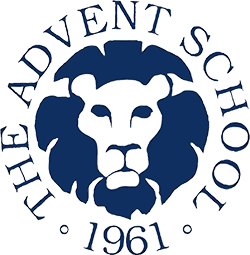Math Moments
At The Advent School, math is both a creative exploration and a structured discipline. Grounded in the belief that children are natural problem-solvers and meaning-makers, Advent’s math curriculum blends the rigor of Everyday Mathematics—developed by the University of Chicago—with the Reggio Emilia philosophy of inquiry, collaboration, and hands-on discovery.
Math is treated as a language students use to understand the world. Learning is project-based, collaborative, and visible. Students represent their thinking through drawings, manipulatives, models, and dialogue, making reasoning explicit and open for reflection. Teachers act as co-learners and guides, observing student strategies and posing questions that extend curiosity, complexity, and critical thinking.
Here’s what happened in math classes around the school recently:
Kindergarten
During Math block recently, Kindergarteners became “math detectives” to solve Mystery Bag challenges. Each bag contained an unknown number of objects—pencils, tiles, or gems—that students counted, represented with drawings, and recorded as numerals. Once solved, they traded bags for new mysteries to explore. These playful activities strengthen one-to-one correspondence and help children practice counting larger quantities in different ways. Students also enjoyed their first Math Bag of the year, when a classmate brought in a collection of Disney coins. After guessing what might be inside using a few clues, the class counted and discussed the collection together—turning curiosity into joyful mathematical discovery.
Second Grade
Second Graders showed perseverance and grit while tackling logic puzzles and pentomino challenges. They practiced reading directions carefully, considering multiple strategies before beginning, and reflecting on how persistence helps their brains grow. One activity provided explicit instructions; another required students to infer the answers from limited clues. In discussing the difference, the class agreed that the more challenging puzzles helped them “grow stronger math brains” and that hard work makes solving problems even more satisfying.
Third Grade
Third Graders continued their work with multiplication and division while also exploring mass versus weight. Using pan balances, they experimented with grams and kilograms and discussed how gravity affects weight. Through this hands-on exploration, students connected classroom learning to real-world examples—like measuring ingredients for recipes or comparing the mass of objects around them.
Fourth Grade
Fourth Grade mathematicians focused on measurement, learning to convert between U.S. customary units such as inches, feet, and yards. Using scaled rulers, they practiced conversion rules—like multiplying by 12 to move from feet to inches—and solved multi-step word problems that applied these concepts in real-world contexts. Students calculated the combined lengths of animals, compared measurements of whales, and discussed strategies for verifying their work. Later, they revisited perimeter and area, measuring objects in their classroom and imagining how to calculate larger spaces, such as the area of a farm field or the perimeter of a soccer field.
Across grade levels, Advent students learn that math is more than memorizing facts or formulas—it’s a way of thinking, wondering, and making sense of the world together.


